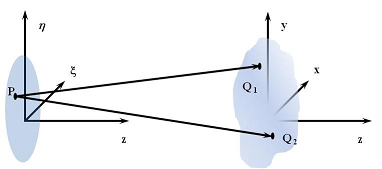Navigation
- Video for JVE paper 20501, Vol. 22, Issue 3, 2020
Michael C. Kobold and Michael C. McKinley, "Remote vibrometry recognition of nonlinear eigen-states for object coverage of randomly large size," Journal of Vibro-engineering, Vol. 22, Issue 3, 2020.
- Here is the graphical abstract for the paper.
Where are we headed?
- Can we live like Jesus would?
Some stress analysis and FEA guidelines from industry were available before attorneys constrained guidelines for engineers.
Do IT executives have a solution for the continual exponential increase in the rate of injection of bugs into our IT systems? All updates have bugs. The update rates increase over the years, the period between updates decreases which is in this spreadsheet, and from that spreadsheet, a plot over time.
Updates
Background Structure Functions for Underwater Acoustics,
a basis to Reduce emissions and improve images, is the
dissertation of
Michael Kobold, PE, PhD.
The publisher for the FAU
Ocean and Mechanical Engineering Department is
ProQuest.
My advisor is Department Chair Pierre-Philippe Beaujean, PhD, Professor.
Separate videos of wavefront distortion, for the
Caribbean, Gulf,
and
St. Andrew Bay (using tidal variations) are built from our OCEANS 22 paper data.
The AIP Advances page for Gouy phase in the sea is hopefully adequate to help others do similar analysis.
Here is an errata for it.
The sheet named marketCap of the spectral efficiency calculations from wikipedia pages of the same name (spectral efficiency) show that a tabulation of the market capitalization provides the basis for an estimate that laser-comms has 2200 times the funding that acoustic communications has. One might assume market cap differences are related to research funding differences.
The April 2024 dissertation includes publication of "Background Structure Functions for statistical acoustic propagation characterization," IEEE OCEANS 22, Hampton Roads, VA, Oct 2022," and "Acoustic error approximation due to Gouy phase in the sea," AIP Advances 13, 075310 (2023), as well as USPTO patents related to this dissertation are US11431421 (30au22) and US11653125 (16my23).
Michael C. Kobold and Michael C. McKinley, "Remote vibrometry recognition of nonlinear eigen-states for object coverage of randomly large size," Journal of Vibroengineering, Vol. 22, Issue 3, 2020.
The paper is best accessed at this web site.
One of the strangest issues involving problems using underwater acoustic modems are the internal waves that are blamed for poor acoustic communications or a complete lack of a-comms. They are more numerous than we might expect, even these exotic nonlinear internal waves:

Jackson, C.R., J.C.B. da Silva, and G. Jeans. 2012. The generation of nonlinear internal waves. Oceanography 25(2):108–123, http :// dx .doi .org/10.5670/oceanog.2012.46. This figure had the caption: “The location of nonlinear internal waves observed in 250 m resolution MODIS (Moderate-Resolution Imaging Spectroradiometer) satellite Sun-glint imagery acquired from August 2002 through May 2004. More than 3,500 nonlinear internal wave occurrences were identified by the survey. Adapted from Jackson (2007)” Permission to use the figure came from The Oceanography Society (info @ tos.org) via Jennifer Ramuui (jenny at toc dot org) by email on 18 January 2019.
Why do Kolmogorov and other spatial spectra REQUIRE locally homogeneous and isotropic (LHI) conditions?
Why do schedules slip (and software bugs, or children take so long)? In many cases, it is just statistics. If several tasks are necessary to accomplish one outcome, and to make it easy to calculate, getting the correct answer for all the tasks is equally probable, then the probability of getting a success is just the product of the knowledge probabilities. A plot of the task probability raised to the power of the number of tasks necessary, looks like this. Try to match the probability percentages to your own case, or better yet, make an easier success probability calculator and let us see it too (matadorsalsa at runbox punto com). ( Excel version. ) For example, you might make a tool that allows the knowledge percentages (the chance of getting a lone task correct) to all be different. For the old structured software testing version, instead of if A then B else C, you might have those horrible old Fortran if (A) less than is B, equal to is C, and greater than is D. Then each output, B, C, or D is 33.3% equally probable - from an outsider's view, since they to not have the Bayes probabilities for B, C, and D.
Other USA (USPTO) Patents include US 9197822 (24n15) and US 9208386 (08d15).
An explanation of Equation 7c from Michael Victor Berry's "Phase Factors Accompanying Adiabatic Changes" in [Barry, 1984]. Berry uses time-
dependent solutions to the Schrödinger Equation to calculate the "geometrical phase change" along a "circuit" C (as opposed to the phase of the polarization and others) on his page 47. The line integral of the phase is i \cyclic_int C
dot d\vec{R}. By Stokes' theorem this is the surface integral over C of the curl of which then becomes the surface integral of the cross-product and leads to a use of outer products in the rest of the use of
Stokes Theorem for this phase.
[Barry, 1984]
Berry, Michael Victor. "Quantal phase factors accompanying adiabatic changes." Proceedings of the Royal Society of London. A. Mathematical and Physical Sciences 392, no. 1802 (1984): 45-57.
Strive to simulate reality, accurately.

.

